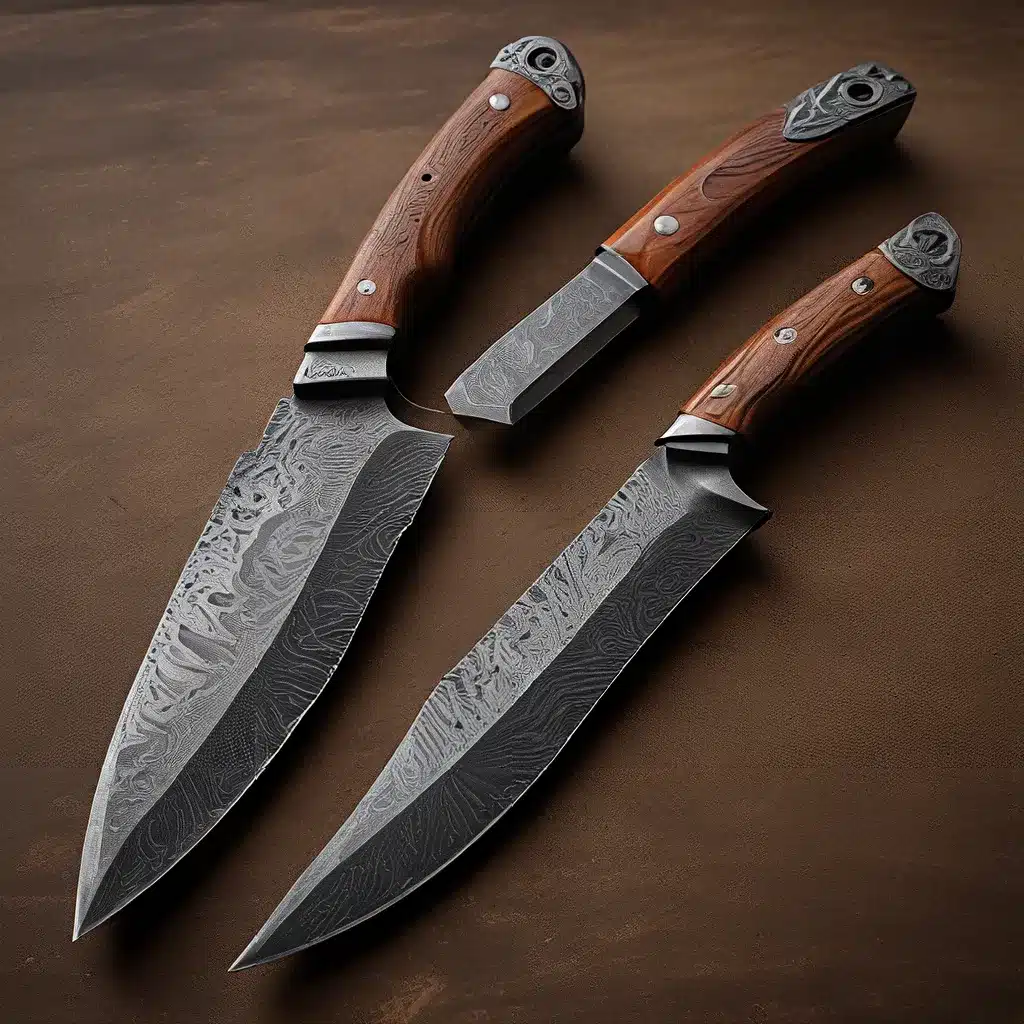
The Enduring Mystery of Damascus Steel
I’ve always been fascinated by the allure of Damascus steel. There’s just something captivating about those swirling, mesmerizing patterns that have captivated swordsmiths and knife enthusiasts for centuries. But as I delved deeper into the history and science behind this legendary material, I discovered a story that is both complex and intriguing.
It’s a tale that spans millennia, from ancient India to the Islamic golden age, and even into the modern era. Along the way, Damascus steel has been shrouded in mystery, myth, and misinformation. But through the efforts of dedicated researchers and modern-day artisans, the secrets of this remarkable material are finally being unraveled.
Unraveling the Myth of Lost Damascus Steel
For the longest time, it was widely believed that the art of forging true Damascus steel was a lost technology. The story went that at some point in history, the key knowledge and techniques simply vanished, leaving us unable to recreate the stunning patterns and superior performance of these legendary blades.
As it turns out, this is something of a myth. The truth is that the process of making Damascus steel was well-documented in historical sources, from ancient alchemists to medieval Islamic scholars. And today, there are scores of skilled artisans who have unlocked the secrets of this material, allowing them to recreate the patterns and properties of historical Damascus steel with remarkable precision.
What’s even more fascinating is that the mechanisms behind the unique patterns in Damascus steel have been thoroughly studied and understood. It’s not some mystical, lost art, but rather a fascinating interplay of metallurgy, chemistry, and craftsmanship.
The Science Behind Damascus Steel
At the heart of Damascus steel is a process called crucible steel production. This involves melting and refining iron in a crucible, often with the addition of specific impurities and alloying elements. The key is getting the right balance of carbon, vanadium, and other trace elements to create a steel with just the right properties.
When the molten steel is slowly cooled, it forms a distinctive pattern of light and dark bands. This is all due to the way the various elements in the steel segregate and interact during the solidification process.
The light bands are created by the formation of hard, carbide-rich regions, while the darker areas are softer, carbide-depleted zones. As the steel is forged and manipulated, these banded patterns are accentuated, creating the mesmerizing ‘Damascus’ look.
The Lost Art, Rediscovered
Now, you might be wondering, if this process was so well-documented, how did it become “lost”? Well, the truth is, it never really went away entirely. Crucible steel production continued in various forms for centuries, from India to Persia to the Caucasus region.
But by the late 19th and early 20th centuries, the practice had dwindled to the point where it was in danger of being forgotten. It wasn’t until the 1980s and 1990s that a new generation of researchers and artisans began to seriously investigate and revive the lost techniques.
Today, there are upwards of 150 individuals who can reliably produce crucible steel with the same patterns and properties as historical Damascus steel. And the best part is, they’re not just replicating the look – they’re creating modern, fully functional blades that can rival the performance of their ancient counterparts.
The Art of Damascus Steel Knives
One of the most exciting applications of this rediscovered technology is in the world of high-end knives and blades. Barbell Blacksmith, a renowned bladesmith, has been at the forefront of this renaissance, creating stunning Damascus steel knives that combine the timeless aesthetic with state-of-the-art metallurgy and knife-making techniques.
These knives are true works of art, with each one showcasing the unique patterns and characteristics of the Damascus steel used in their construction. But it’s not just about the looks – these blades are also incredibly durable, razor-sharp, and a joy to use in the kitchen or in the field.
The team at Herman Knives has been working closely with Barbell Blacksmith and other master bladesmiths to bring the best of Damascus steel knives to their customers. These are blades that not only look stunning but also perform exceptionally well, cutting through tasks with ease and precision.
Appreciating the History and Craftsmanship
As I hold one of these Damascus steel knives in my hand, I can’t help but feel a sense of awe and appreciation for the rich history and incredible craftsmanship that has gone into its creation. It’s a tangible link to a centuries-old tradition, a testament to the ingenuity and dedication of the countless individuals who have worked to unravel the mysteries of this remarkable material.
But beyond the historical significance, these knives are simply a joy to use. The way the light plays across the swirling patterns, the heft and balance in your hand, the effortless way they slice through even the toughest ingredients – it’s a truly indescribable experience.
Conclusion: Forged in Fire, Shaped by Passion
The story of Damascus steel is one of perseverance, curiosity, and a deep respect for the art of knife-making. It’s a tale that spans millennia, crossing cultures and civilizations, and now finds its way into the kitchens and workshops of modern enthusiasts.
As I continue to explore the world of Damascus steel knives, I can’t help but be inspired by the passion and dedication of the craftsmen who have breathed new life into this ancient art. It’s a reminder that the pursuit of excellence, the drive to understand and master a craft, can lead to the most remarkable and beautiful creations.
So whether you’re a seasoned chef, a avid outdoorsman, or simply someone who appreciates the beauty and history of fine blades, I encourage you to explore the world of Damascus steel knives. Who knows, you might just uncover a connection to a story that has been forged in the fires of time, and shaped by the hands of countless passionate artisans.


